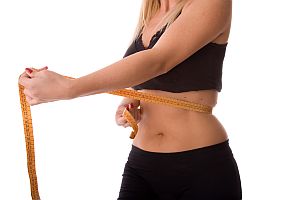 Almost every human society has a way to mark the passage of time. Similarly, nearly every human society also celebrates the development of its people in one way or another. For some, it’s simply about remembering a specific day on the calendar as a family or community—a birthday. For others, it’s about recognizing special rights of passage that coincide with particular ages. Some do both. However, it is also true to say that we have mixed feelings about getting older. There’s a good reason for this.
Almost every human society has a way to mark the passage of time. Similarly, nearly every human society also celebrates the development of its people in one way or another. For some, it’s simply about remembering a specific day on the calendar as a family or community—a birthday. For others, it’s about recognizing special rights of passage that coincide with particular ages. Some do both. However, it is also true to say that we have mixed feelings about getting older. There’s a good reason for this.
Over the years, we gain valuable experiences that build knowledge, wisdom and (if we’re lucky) close personal and professional relationships. But the vast majority of us also lose something in the process—our physical—and sometime mental—health and well-being. Even if we don’t encounter much in the way of illness or injury, most of us simply won’t have the strength, endurance, flexibility, balance and coordination on our 50th birthday that we did on our 25th, at the peak of young adulthood. For many people, there is also an eventual cognitive decline—we can’t remember things the way we could when we were younger, it takes us longer to process information and learning new things can seem more difficult. But here’s the good news: your biological age is NOT necessarily the same as your chronological age, and there are specific things you can do to maintain your body’s youthfulness.
Age and aging AREN’T necessarily as closely related as many people believe. Interestingly, a growing body of evidence suggests that everybody grows older at a different pace. Researchers who study biological aging have noticed that some people age much faster than normal while others age much more slowly. According to a recent Wall Street Journal article describing one biological aging study: “Most of the study participants aged one biological year for each chronological year. Some, however, put on as much as three biological years for every one year, while others didn’t increase in biological age at all during the 12-year span the study surveyed. Using a subset of the biomarkers, the researchers calculated that at 38 years old, the participants’ biological ages ranged from 28 to 61.” This is an ENORMOUS difference! What could possible account for it?
While much of the aging process remains a mystery, we are learning more about it all the time. Aging is influenced by our genes, environment, and lifestyle. By the time we reach middle and old age, these factors have had time to make a significant impact on our health. Some of these influences may be positive and others negative.
Genetics
Let’s start with heredity. Genes are powerful predictors of longevity—but there is more to the story than that. Family history definitely influences your health and how long you will likely live, but your day-to-day behaviors can make a difference in the power of genetic predisposition. In other words, you can affect your own longevity and quality of life positively or negatively to some degree based on your own choices about things like diet, exercise, sleep and stress management as well as preventive healthcare. New genetic tests make it possible to know if you are predisposed to some types of diseases so that you can make better decisions earlier in your life.
Environment
The environment can clearly affect our health, particularly the places where we spend the most time living, working and playing. Our exposure to the sun, infectious diseases and toxic chemicals are some obvious physical environmental factors. But there are some less obvious social and psychological ones to consider as well. These include factors like the amount of stress we’re under at work and at home, and the quality of our relationships. As with genetics, environment alone doesn’t guarantee any particular outcomes with respect to our longevity or quality of life. How we interact with our environment and respond to its opportunities and challenges is a very important variable.
Lifestyle Choices
Lifestyle choices such as the food we eat, the drinks and drugs we consume, how much we exercise and how much we sleep can all play a very significant role in our own rate of aging. What researchers and clinicians cannot tell us yet is which of these factors will make the greatest difference in the life of any one individual. That said, we can say a few things with a very high degree of confidence based on our own training and experience.
Nutrition and exercise matter—a lot. And—according to the most up-to-date research—it’s never too late to benefit from eating better and exercising more. Even elderly people can see a meaningful improvement in their health and well-being and a reduction in the incidence of some diseases by starting a healthy diet and exercise program suitable for their age and health status. No matter how old you are, maintaining a healthy weight and a moderate level of fitness will give you a far better chance of enjoying a longer, happier life than someone who leads a sedentary lifestyle.
Some behaviors just aren’t good for you. Smoking, excessive drinking and drug use are all significant predictors of disease and death. If you do any of these things, stopping can have an immediate impact on your likely health and longevity. If you don’t do any of these things, don’t start.
Strong support systems help reinforce healthy habits. It’s true that we all “get along with a little help from our friends.” Surrounding yourself with other people who also lead a healthy lifestyle makes it more likely that you’ll continue on the right path. Family, friends and colleagues who value nutrition, exercise, quality sleep and work-life balance can make a big difference!
Proactive, preventive healthcare is key. While we all do our best at home and at work to avoid illness and injury, it’s also important to work with your doctors to monitor your health and to address any current or potential problems as early as possible.
As you can see, there is no single “magic bullet” to delay or reverse the aging process. However, by being aware of your own family health history, environment and lifestyle options, you can make more thoughtful choices that can add year to your life and life to your years. If you or someone you care about has questions or concerns related to health and wellness, please call or visit our office. We’re here to help!
 Just about everyone has heard about the importance of calcium in maintaining strong bones and teeth. In fact, 99 percent of the calcium in our body is stored in our bones. However, the remaining one percent that is located in our blood and cells is just as important. It is necessary to maintain many of the body’s vital functions, and if you do not get adequate calcium from your diet to keep the required amount in your blood, the mineral will be taken from your bones to meet the need.
Just about everyone has heard about the importance of calcium in maintaining strong bones and teeth. In fact, 99 percent of the calcium in our body is stored in our bones. However, the remaining one percent that is located in our blood and cells is just as important. It is necessary to maintain many of the body’s vital functions, and if you do not get adequate calcium from your diet to keep the required amount in your blood, the mineral will be taken from your bones to meet the need.







